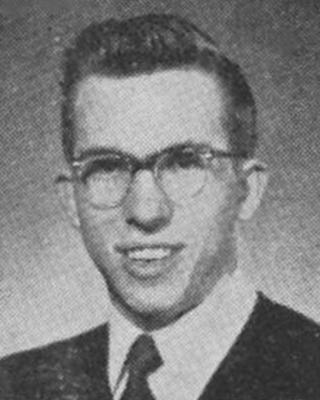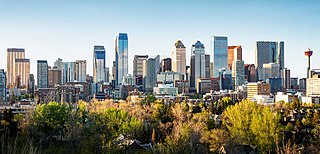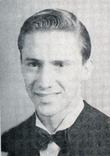
Edgar Peter Lougheed was a Canadian lawyer and Progressive Conservative politician who served as the tenth premier of Alberta from 1971 to 1985, presiding over a period of reform and economic growth.

BP Canada was a Canadian petroleum company and subsidiary of British Petroleum that existed between 1955 and 1992. The name refers to a group of companies that engaged in various segments of the petroleum industry lifecycle. BP entered the Canadian market in October 1953, when it purchased a 23 percent stake in the Triad Oil Company. In 1955, BP formed a Canadian subsidiary, based in Montreal, called BP Canada Limited. The company began acquiring retail stations in Ontario and Quebec and in 1957 started construction on a refinery in Montreal. By the end of the 1950s BP Canada was a fully-integrated operation. In 1964, it acquired from Cities Service the Oakville Refinery, and then expanded its operations significantly in 1971 when it acquired Supertest Petroleum.
NOVA Chemicals Corporation is a Canadian petrochemical company that has been in operation since 1954. NOVA was formed as provincial crown corporation called the Alberta Gas Trunk Line Company Limited to manage Alberta's natural gas collection system. During the 1970s, the company diversified into petroleum exploration and production, manufacturing, and petrochemicals. In 1980 the AGTL was renamed NOVA, An Alberta Corporation. After a decade of financial struggles, in 1998 NOVA sold its petroleum and pipeline business to TransCanada Pipelines and continued as solely a petrochemicals operation. The gas collection system run by TransCanada is now called the NOVA Gas Transmission Line.
Talisman Energy Inc. was a Canadian independent petroleum company that existed between 1993 and 2015. The company was created from the assets of BP Canada after British Petroleum divested its 57 percent stake in June 1992. It was one of Canada's largest independent oil and gas companies, and operated globally, with operations in Canada and the United States of America in North America; Colombia, South America; Algeria in North Africa; United Kingdom and Norway in Europe; Indonesia, Malaysia, Vietnam, Papua New Guinea, East Timor and Australia in the Far East; and Kurdistan in the Middle East. Talisman Energy has also built the offshore Beatrice Wind Farm in the North Sea off the coast of Scotland.

Daryl Kenneth "Doc" Seaman was a Canadian engineer, oilman, and hockey executive. Seaman was the founder, president, and chairman of Bow Valley Industries, one of Canada's largest independent petroleum companies. In addition to his business activities, from 1941 to 1945 he served as a pilot in the Royal Canadian Air Force and from 1980 to 2009 was a part-owner of the Calgary Flames.

Richard Francis "Dick" Haskayne is a Canadian retired accountant and oilman whose career spanned from 1956 to 2005. Haskayne served as senior official of several major Canadian petroleum companies including Hudson's Bay Oil and Gas Company, Home Oil Company, Interprovincial Pipeline Company, Nova Corporation, and TransCanada Pipelines. He is also known for his association with the University of Calgary, whose management faculty was renamed the Haskayne School of Business in 2002.
There were several independent candidates in the 1993 Canadian federal election, some of whom were associated with unregistered parties. One independent candidate, Gilles Bernier of Beauce, was elected. Information about other such candidates may be found here.
Fraser Barry Cooper is a Canadian political scientist at the University of Calgary. Before coming to Calgary, he taught at Bishop's University (1968–1970), McGill University, and York University (1970–1981). The winner of a Killam Research Fellowship, he is a fellow of the Royal Society of Canada. In 1991, Cooper wrote Action into Nature: An Essay on the Meaning of Technology and he co-authored Deconfederation: Canada without Quebec, in which he argued that Canada would benefit from Quebec separation. He is also the author of the 1999 publication Eric Voegelin and the Foundations of Modern Political Science.

The Bow is a 158,000-square-metre (1,700,000 sq ft) skyscraper in downtown Calgary, Alberta, Canada. The 236 metre (774 ft) building was the tallest in Calgary between July 8, 2010, when it surpassed the Suncor Energy Centre, and May 11, 2016, when it was exceeded by Brookfield Place. The Bow is currently the second tallest office tower in Calgary and the third tallest in Canada outside Toronto. The Bow is also considered the start of redevelopment in Calgary's Downtown East Village. It was completed in 2012 and was ranked among the top 10 architectural projects in the world of that year according to Azure magazine. It was built for oil and gas company Encana, and was the headquarters of its successors Ovintiv and Cenovus.

Panarctic Oils Limited was formed in 1966 as a result of the Canadian government's eagerness to encourage exploration of the Canadian Arctic islands and to assert Canadian sovereignty in the region. That company consolidated the interests of 75 companies and individuals with Arctic Islands land holdings plus the federal government as the major shareholder. It played an important part in the development of the petroleum industry in Canada.

Bow Valley Square is a four-tower office tower complex in downtown Calgary, Alberta, Canada. The complex constructed in stages between 1972 and 1982 was home to Calgary's tallest building between 1974 and 1976. The complex is owned by Alberta Investment Management Corporation, OMERS and Oxford Properties Group.

The Alberta Heritage Savings Trust Fund(HSTF) is a sovereign wealth fund established in 1976 by the Government of Alberta under then-Premier Peter Lougheed. The Heritage Savings Trust Fund was created with three objectives: "to save for the future, to strengthen or diversify the economy, and to improve the quality of life of Albertans." The operations of the Heritage Savings Trust Fund are subject to the Alberta Heritage Savings Trust Fund Act and with the goal of providing "prudent stewardship of the savings from Alberta's non-renewable resources by providing the greatest financial returns on those savings for current and future generations of Albertans." Between 1976 and 1983 the Government of Alberta deposited a portion of oil revenue into the fund. The Heritage Savings Trust Fund used oil revenues to invest for the long term in such areas as health care, education and research and as a way of ensuring that the development of non-renewable resources would be of long-term benefit to Alberta. The strategy and goals of the fund have changed through successive provincial governments which moved away from direct investments in Alberta to a diversified approach, which now includes stocks, bonds, real estate and other ventures.

Calgary is the largest city in the Canadian province of Alberta. It is the largest metro area within the three prairie provinces. As of 2021, the city proper had a population of 1,306,784 and a metropolitan population of 1,680,000 making it the third-largest city and fifth-largest metropolitan area in Canada.

Leduc No. 1 was a major crude oil discovery made near Leduc, Alberta, Canada, on February 13, 1947. It provided the geological key to Alberta's most prolific conventional oil reserves and resulted in a boom in petroleum exploration and development across Western Canada. The discovery transformed the Alberta economy; oil and gas supplanted farming as the primary industry and resulted in the province becoming one of the richest in the country. Nationally, the discovery allowed Canada to become self-sufficient within a decade and ultimately a major exporter of oil.
Saskatchewan Oil & Gas Corporation, also known as SaskOil, was a Canadian Crown corporation owned by the Government of Saskatchewan from 1973 to 1986, when the company went public under the name Wascana Energy Inc. In 1987, the last remaining government interest in the corporation was sold to Canadian Occidental Petroleum and in 1997 it was bought entirely by Canadian Occidental.
John Bishop Ballem (1925–2010) was a Canadian murder mystery/thriller novelist. While best known for his novels about the oil industry and private law, Ballem was also a naval air force pilot, assistant professor, specialist in the oil industry and private law lawyer. He was an acknowledged legal authority on oil and gas and winner of the Petroleum Law Foundation Prize in 1973. He was a member of the Crime Writers of Canada, the Probus Club of Calgary and the Air Crew Association of Alberta: Southern Alberta Branch. In 2009, the Law Society of Alberta and the Canadian Bar Association of Alberta awarded John the Distinguished Service Award for Legal Scholarship. He was also a Calgary Herald world travels reporter and visited many exotic locations such as both poles. Ballem's most important and well known work is the internationally recognized authoritative text The Oil and Gas Lease in Canada, a standard legal reference that went to four editions, the final being 2008.

Byron James Seaman was a Canadian businessman. He was the co-owner of the Calgary Flames of the National Hockey League (NHL) for three decades from 1980 until 2010.
Peter Connellan is a retired Canadian football coach. He served as the head coach of the Calgary Dinos football team in 1977 and again from 1983 to 1995. He was also a professor in the Department of Physical Education at the University of Calgary.

Ranger Oil Limited was a Canadian independent petroleum company that operated between 1950 and 2000. Ranger was founded as the Maygill Petroleum Company Limited with the aim to develop oil leases in the Steveville, Alberta area. In 1954, Jack Piece (1924–1991), originally of Montreal, acquired control of the company and renamed it West Maygill Gas and Oil Limited. In 1956, Maygill purchased an American company Pierce had founded, the Ranger Oil Company, and in 1958 renamed itself Ranger Oil (Canada) Limited. Over the subsequent decades, Pierce built Ranger into one of Canada's most successful independent producers. During the 1970s and 1980s, Ranger played an active role in the development of the North Sea. In 2000, Canadian Natural Resources acquired Ranger.












